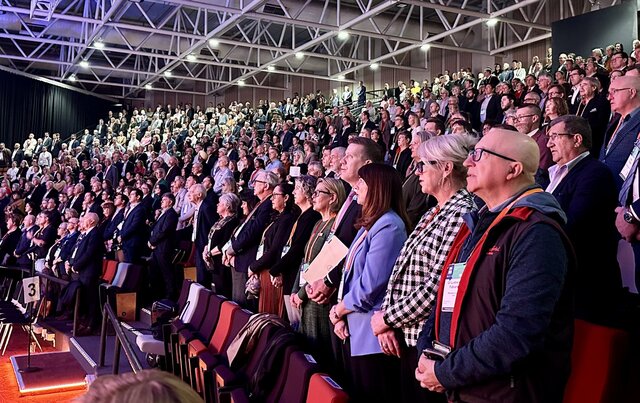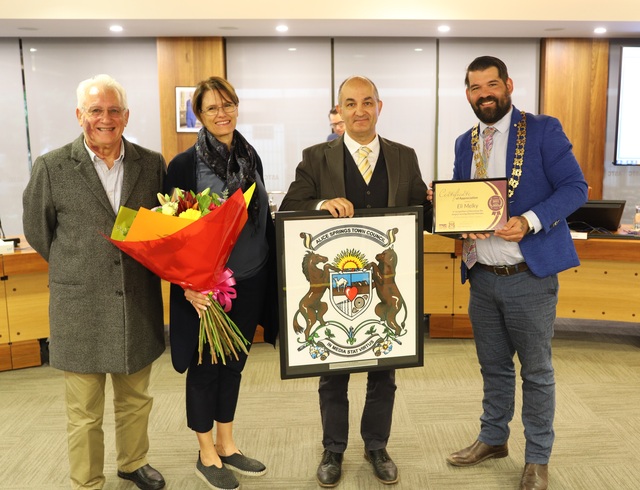It is sad to see small towns struggling to survive against the onslaught of agglomeration effects and structural changes.
Thankfully regional folk are doing great things to make themselves more interesting to city dwellers by creating an emotional connection to them. And good food in the tummy creates an emotional connection.
Indeed, if you’re travelling in the bush there’s nothing better than being at the local café for a brekky of local bacon, eggs, tomato and toast, washed down with a decent coffee while reading the local paper. The academics call it ‘Slow Travel’ whereby tourists become connected to a place, its people, and the local food and culture. Indeed, Dunkeld, Orange and Hahndorf have managed it.
Well I recently drove for fifteen minutes around a fair-sized regional town (8,000 population) looking for such a café. But I retired hurt to a multinational fast food outlet for a hash brown and a burger the size of a small child’s fist. The establishment was quite busy. It had presumably had run the opposition into the ground.
The next evening I stopped in to an iconic café in an iconic town 200km further on. The fish and chips were terrible – oily New Zealand hake and crinkle-cut chips. Shudder.
Coincidentally, a few days before, we’d been reflecting on reasons for declining regional tourism traffic – rising petrol prices, the cost of upmarket tourism accommodation, expensive airfares to regional areas, cheap international airfares, and absence of a strong regional food culture.
What is the reason for the average food served at cafes and restaurants in the regions? Is it because the locals aren’t fussy diners? Or haven’t the kitchen staff caught up with changing consumer preferences? It’s a shame because running a small business in the bush is tough work. The problem is finding someone willing to tell the mum and dad chefs.
So what if there was a program to deploy expert chefs and dieticians to provide advice on cooking skills, menu development, food sourcing, marketing and signage? After all, Enterprise Connect and AusIndustry have good programs advising small businesses in other sectors – so it’s no big deal to tack on another program.
A constraint is that the issue has four dimensions – health, tourism, small business, regional development. Perhaps a bottom-up approach via a collection of Regional Organisation of Councils could pull something together? If you share our concern, please email us.
Galleries and Museums
I flagged last year that I’d raised with national museums and galleries the prospect of getting more of their collections out of Canberra and into the regions. The reason is that the National Museum has 95% of its collection in storage, and the War Memorial, Sound and Film Archive, National Gallery, National Portrait Gallery, National Library etc. are in a similar boat.
Although it’s tricky, we have identified some great officials with open minds, and they have helped us develop some win-win options. We are therefore re-commencing talks with the War Memorial and the National Museum shortly. If you have an interest, please let me know.
Don’t be alarmed at Rudd cuts
There was unnecessary alarm last month when PM Rudd announced $4 billion worth of cuts to environment programs. The major casualties were the Energy Security Fund and Carbon Capture and Storage program – these were associated with the now defunct carbon tax. The Biodiversity Fund also took a hit, although the current round 2 is proceeding. The third environmental program, ARENA (renewable energy), with funding of $3 billion is said to be safe by federal officials because of bipartisan support. However Messrs. Abbott and Hockey could have different ideas if and when the Department of Finance gets in their ear.
Regional dentists
While on the subject of ill-conceived programs, the feds have a Dental Relocation & Infrastructure Support Scheme (DRISS) to get dentists out into regional areas – big subsidies (up to $370k per dentist).
Alas, the patients need to have private health cover. I explained to the DRISS folk that the people they’re endeavouring to help often can’t afford private health cover! The reply was that we don’t have much funding ($77.7 million) but we might look at hybrid arrangements. If you don’t believe me, here is the verbage on the DRISS website – “Applicants (i.e. dentists) who intend to operate in both private and public practice may be eligible for the measure, however applicants who intend to operate solely within the public sector are not eligible.”
Anyone for Paris?
I am meeting with OECD officials in Paris next month to get an update on industry and regional issues, pursue linking of clusters and networks, and to inject some cash into the local restaurants and wineries. My wife and daughter (born in a lift in Versailles) are tagging along. That’s a story for another day.
Anyway, should any councils (preferably Cockatoo members) want me to explore issues on your behalf, just ask! For example, there is potential to bring out OECD experts to Australia or for you to get Aussie councils involved in international agendas. See www.oecd.org – then click on ‘regional, rural and urban development’.
Rod Brown is a Canberra-based consultant and lobbyist specialising in industry/regional development, investment attraction and clusters, and accessing federal grants. He also runs the Cockatoo Network.
Phone: (02) 6231 7261 or 0412 922 559
Email: apdcockatoo@iprimus.com.au
Blog: www.investmentinnovation.wordpress.com (750 articles)







